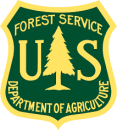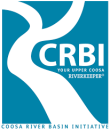States
Alabama, Georgia, TennesseeThe Coosa River Basin is a hotspot for freshwater biodiversity and the focus of substantial research and conservation effort. The Upper Coosa consists of three headwater rivers, the Conasauga, Coosawattee and Etowah, their many tributaries and the agricultural, industrial, rural and densely populated lands that surround them. These watersheds are home to a dozen threatened or endangered aquatic species plus a fascinating diversity of plants and wildlife above and below the river’s surface.
The Conasauga basin supports about 90 native fish species, including more than a dozen of rare or endangered species. The Conasauga has historically supported at least 44 mussel species, but only about 20 species remain.
The Coosawattee flows about 25 miles from the town of Ellijay to Calhoun. It is dammed to form Carters Lake just downstream of Ellijay. The U.S. Army Corps of Engineers Carters Dam is the tallest earthen-fill dam in North America and creates a 400-foot deep reservoir. A second, re-regulation dam is located downstream of this dam. Two crayfish and a fish are endemic to the Coosawattee River system.
A relatively small watershed, the Etowah River supports a diversity of life comparable to much larger river systems. Extending through ten counties, the Etowah’s amazing variety of aquatic species includes an estimate at one time of 91 native fish species. Unfortunately, there are concerns for the Etowah River's future health. Several native aquatic species are no longer found there. Two fish species, the amber darter and Etowah darter, are listed as federally endangered. A third, the Cherokee darter, is a federally threatened fish species. Most native mussels have been extirpated.
The Conasauga and Coosawattee come together to form the Oostanaula River, which flows 47 miles to Rome where it meets the Etowah to form the Coosa.
The Partnership for the Upper Coosa is a group of federal, state, and non-profit organizations working together in northwest Georgia to conserve the rich endemic ecosystem of the Upper Coosa.








